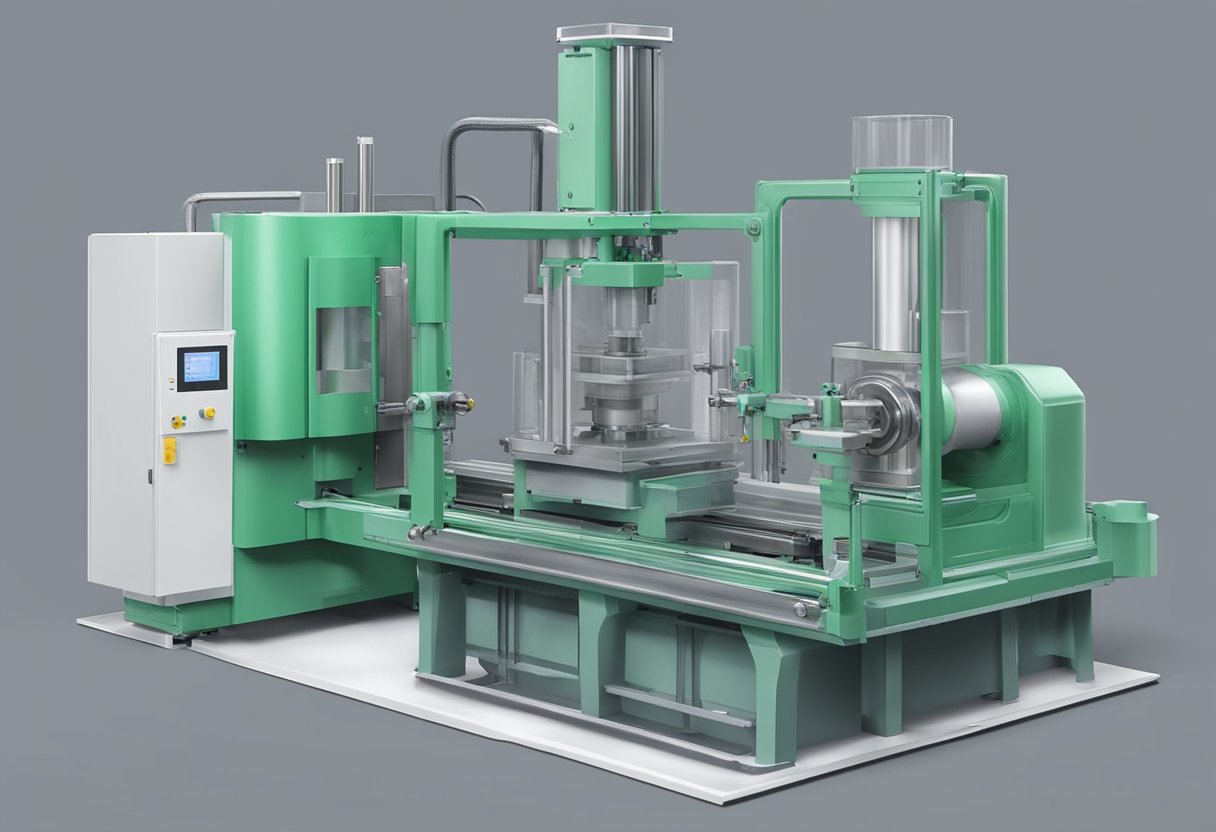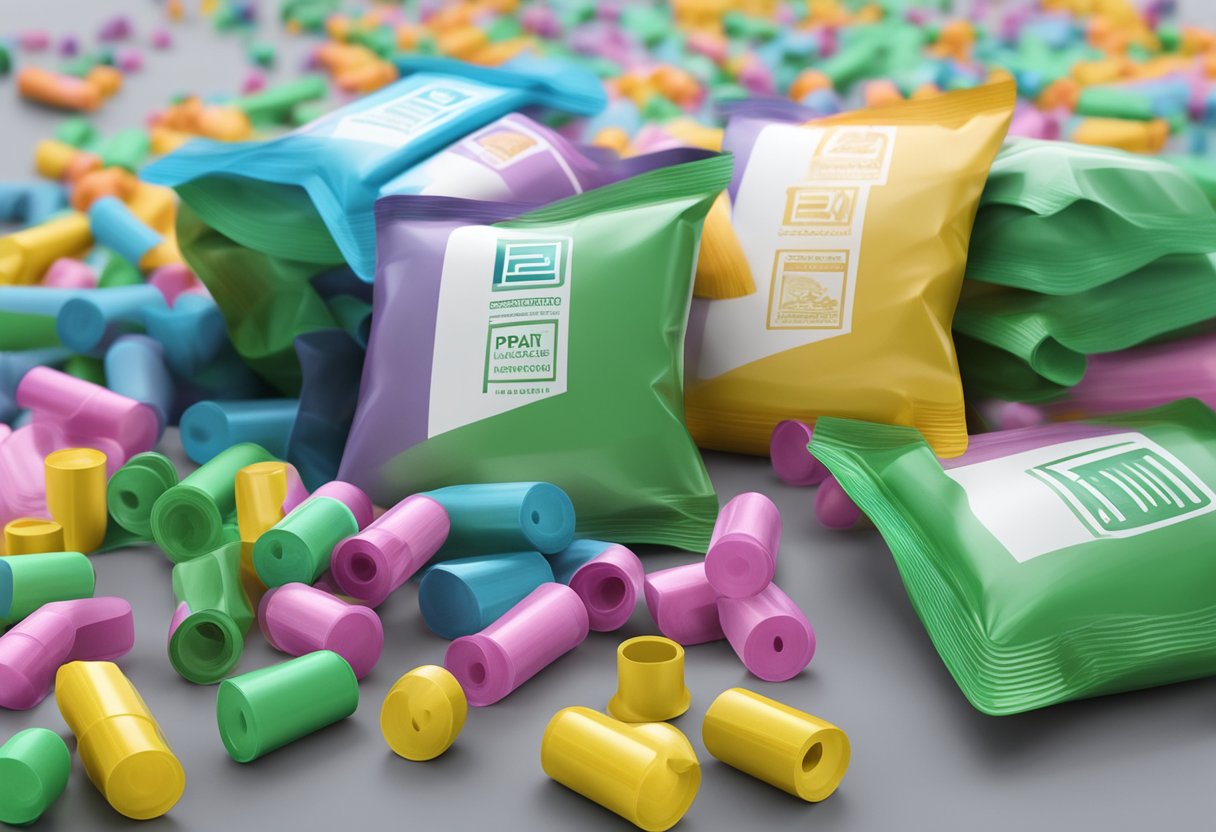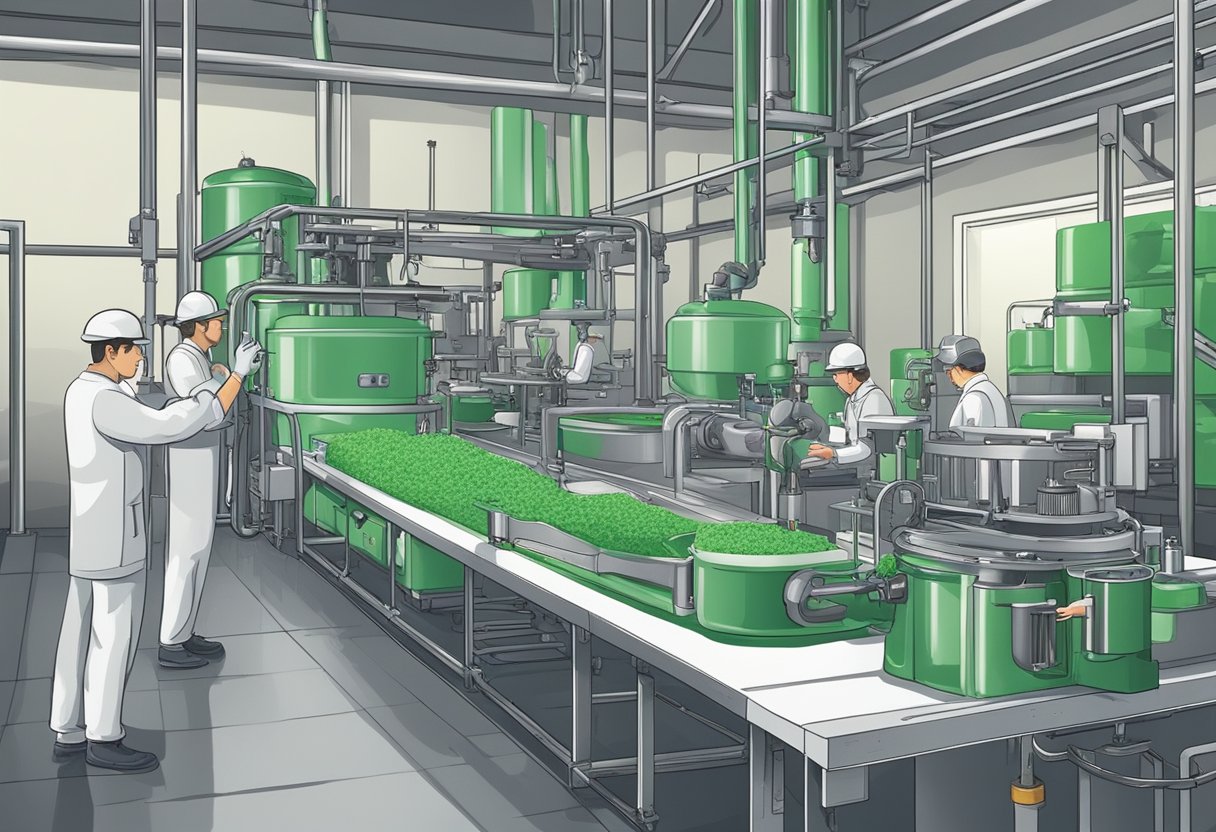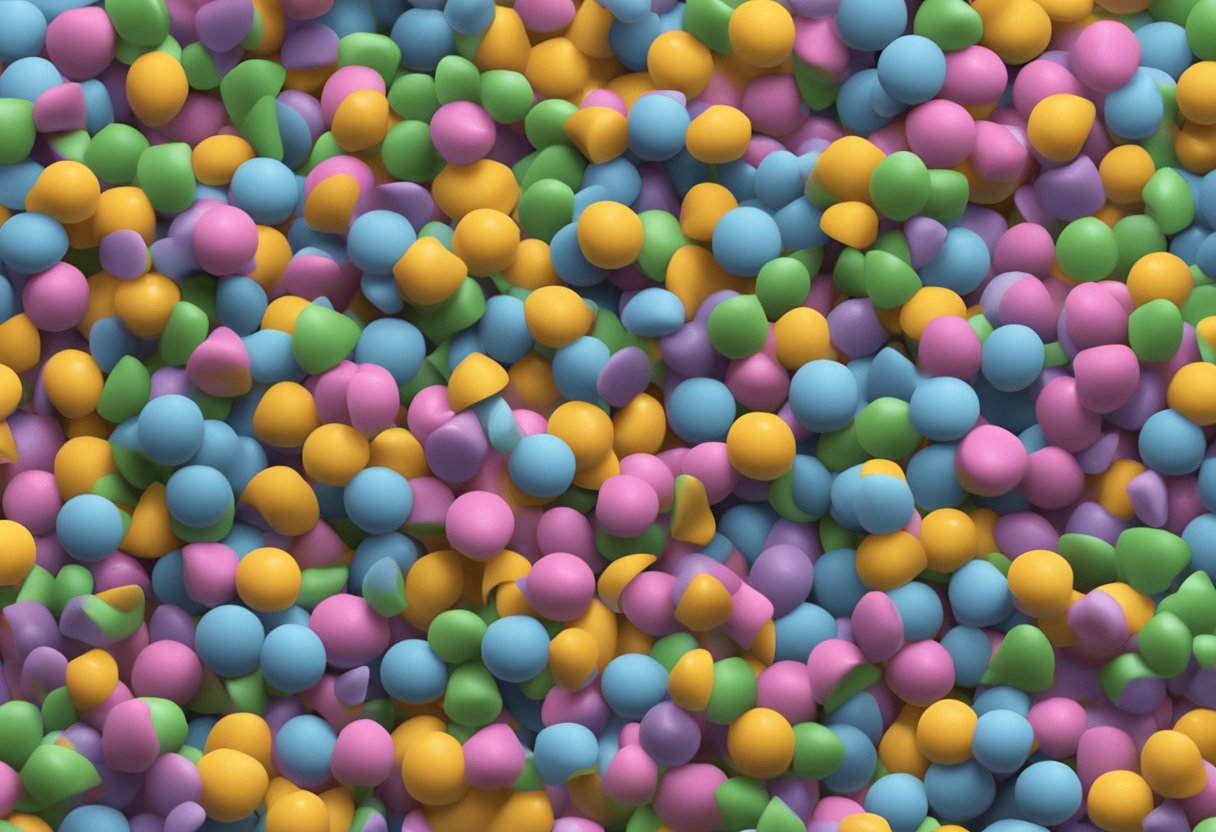PBAT Bioplastic: An Environmentally-Friendly Alternative to Traditional Plastics
19/01/2024
PBAT bioplastic is a type of biodegradable plastic that is becoming increasingly popular due to its eco-friendliness. PBAT stands for polybutylene adipate terephthalate, which is a biodegradable polyester derived from renewable resources such as corn starch, sugarcane, and cassava. PBAT bioplastic is a viable alternative to traditional petroleum-based plastics, which are non-biodegradable and contribute to environmental pollution.

PBAT bioplastic has gained popularity in recent years due to its biodegradability and compostability. Unlike traditional plastics, which can take hundreds of years to break down, PBAT bioplastic can decompose within a matter of months under the right conditions. This makes it an ideal solution for single-use items such as food packaging and bags, which are major contributors to plastic waste in landfills and oceans.
In addition to being biodegradable, PBAT bioplastic is also renewable and sustainable. Its production relies on renewable resources, which reduces the dependence on non-renewable fossil fuels. Furthermore, PBAT bioplastic can be recycled, further reducing its impact on the environment. As the world becomes more conscious about the impact of plastic waste on the environment, PBAT bioplastic is emerging as a promising solution to the problem.
Overview of PBAT Bioplastic

Definition and Composition
PBAT bioplastic is a type of biodegradable plastic that is made from a blend of biodegradable polymers, including polybutylene adipate terephthalate (PBAT), starch, and other biodegradable additives. PBAT is a thermoplastic biodegradable polyester that is derived from renewable resources, such as corn starch, and is fully biodegradable under industrial composting conditions.
PBAT bioplastic has become increasingly popular in recent years due to its ability to biodegrade in a relatively short period of time, which makes it an attractive alternative to traditional plastics that can persist in the environment for hundreds of years. Additionally, PBAT bioplastic has similar mechanical properties to traditional plastics, which makes it suitable for a wide range of applications.
Historical Development
The development of PBAT bioplastic can be traced back to the 1990s, when researchers began to explore the potential of biodegradable plastics as an alternative to traditional plastics. Since then, there has been significant progress in the development of biodegradable plastics, and PBAT bioplastic has emerged as one of the most promising materials in this field.
Today, PBAT bioplastic is used in a variety of applications, including packaging materials, agricultural films, and disposable products. As the demand for sustainable materials continues to grow, it is likely that PBAT bioplastic will become even more widely used in the future.
Production Process

Raw Material Sourcing
The production process of PBAT bioplastic involves the use of various raw materials. The primary raw materials used in the production of PBAT bioplastic are bio-based polymers such as polylactic acid (PLA) and polyhydroxyalkanoates (PHA). These polymers are derived from renewable sources such as cornstarch and sugarcane. Other raw materials used in the production process include plasticizers, fillers, and additives. These materials are carefully sourced to ensure that they meet the required standards for the production of high-quality PBAT bioplastic.
Polymerization Techniques
The polymerization process is a critical step in the production of PBAT bioplastic. The process involves the use of various techniques such as melt blending, solution blending, and reactive extrusion. In melt blending, the raw materials are melted together and then mixed to form a homogenous mixture. Solution blending involves dissolving the raw materials in a solvent and then mixing them to form a homogenous solution. Reactive extrusion involves the use of a reactive agent to initiate the polymerization process.
Post-Processing and Finishing
Once the polymerization process is complete, the PBAT bioplastic is subjected to various post-processing and finishing techniques. These techniques include extrusion, injection molding, and blow molding. Extrusion involves the use of heat and pressure to shape the PBAT bioplastic into various forms such as sheets, tubes, and rods. Injection molding involves injecting the PBAT bioplastic into a mold to form a specific shape. Blow molding involves the use of air pressure to shape the PBAT bioplastic into various forms such as bottles and containers. The finished product is then subjected to various finishing techniques such as polishing and coating to enhance its appearance and durability.
Properties of PBAT Bioplastic

Biodegradability
PBAT bioplastic is a type of biodegradable plastic that can decompose under certain conditions, making it an environmentally friendly alternative to traditional plastics. The biodegradation process involves the breakdown of the polymer chains by microorganisms, which convert the material into water, carbon dioxide, and biomass. The rate of biodegradation can vary depending on the specific conditions, such as temperature, humidity, and the presence of microorganisms.
Mechanical Characteristics
PBAT bioplastic has mechanical properties that are similar to those of traditional plastics, making it suitable for a wide range of applications. It has good tensile strength, flexibility, and impact resistance, which makes it ideal for use in packaging, agriculture, and consumer goods. PBAT bioplastic can also be blended with other biodegradable materials to improve its properties, such as stiffness and heat resistance.
Thermal Stability
PBAT bioplastic has good thermal stability, which makes it suitable for use in high-temperature applications. It can withstand temperatures up to 60°C without significant degradation, which makes it ideal for use in hot-fill applications, such as food and beverage packaging. PBAT bioplastic can also be processed using conventional plastic processing techniques, such as injection molding and extrusion, which makes it easy to manufacture into various shapes and sizes.
Overall, PBAT bioplastic is a promising alternative to traditional plastics due to its biodegradability, mechanical properties, and thermal stability. With the increasing demand for sustainable materials, PBAT bioplastic has the potential to become a widely used material in various industries.
Applications of PBAT Bioplastic
PBAT bioplastic has a wide range of applications in various industries due to its biodegradable and compostable nature. Here are some of the major applications of PBAT bioplastic:
Packaging Industry
PBAT bioplastic is widely used in the packaging industry as an alternative to traditional petroleum-based plastics. It is used to make various types of packaging materials, including bags, films, and containers. PBAT bioplastic is particularly popular in the food packaging industry as it is safe for food contact and can be composted after use. It is also used in the production of biodegradable packaging materials for e-commerce and shipping.
Agricultural Sector
PBAT bioplastic is also used in the agricultural sector for mulching films, which are used to cover the soil around plants to reduce weed growth and retain moisture. PBAT bioplastic mulching films are biodegradable and can be composted after use, reducing the amount of waste generated in the agricultural sector.
Medical Use
PBAT bioplastic is also used in the medical industry for various applications, including surgical sutures, drug delivery systems, and medical implants. PBAT bioplastic is biocompatible, meaning it does not cause any adverse reactions when in contact with living tissue. It is also biodegradable, reducing the risk of long-term environmental pollution.
Overall, PBAT bioplastic has a wide range of applications in various industries due to its biodegradable and compostable nature. As more industries move towards sustainable and eco-friendly alternatives, PBAT bioplastic is expected to see increased demand in the future.
Environmental Impact
Life Cycle Assessment
Life Cycle Assessment (LCA) is a comprehensive method to evaluate the environmental impact of a product from cradle to grave. PBAT bioplastic has been studied using LCA to assess its environmental impact. The study shows that PBAT bioplastic has a lower carbon footprint compared to conventional plastics. It is because PBAT bioplastic is made from renewable resources such as plant-based materials, which have a lower carbon footprint than fossil fuels.
The study also shows that PBAT bioplastic has a lower impact on non-renewable resources, such as water and energy, compared to conventional plastics. PBAT bioplastic has a lower water consumption and energy consumption during its production process. Moreover, PBAT bioplastic is biodegradable and compostable, which means that it can be decomposed into natural elements when disposed of properly.
Comparison with Conventional Plastics
PBAT bioplastic has several advantages over conventional plastics in terms of environmental impact. Conventional plastics are made from fossil fuels, which have a high carbon footprint and are non-renewable resources. Moreover, conventional plastics take hundreds of years to decompose, which leads to plastic waste accumulation in the environment.
On the other hand, PBAT bioplastic is made from renewable resources, which have a lower carbon footprint and are biodegradable and compostable. PBAT bioplastic can be decomposed into natural elements in a shorter time, which reduces the plastic waste accumulation in the environment.
In conclusion, PBAT bioplastic has a lower environmental impact compared to conventional plastics. Its production process has a lower carbon footprint, water consumption, and energy consumption. Moreover, PBAT bioplastic is biodegradable and compostable, which reduces plastic waste accumulation in the environment.
Market Trends and Economics
Global Market Analysis
The global market for bioplastics is expected to grow significantly in the coming years, due to the increasing demand for eco-friendly and sustainable products. According to a report by Grand View Research, the global bioplastics market size was valued at USD 10.5 billion in 2020 and is expected to grow at a compound annual growth rate (CAGR) of 14.5% from 2021 to 2028.
The demand for bioplastics is driven by several factors, including the increasing awareness among consumers about the environmental impact of traditional plastics, government initiatives to reduce plastic waste, and the growing popularity of biodegradable and compostable products. As a result, the market for bioplastics is expected to continue to grow in the coming years.
Cost Factors
The cost of producing bioplastics is a major factor that affects the growth of the market. The production of bioplastics requires significant investment in research and development, as well as specialized equipment and facilities. Additionally, the cost of raw materials used in the production of bioplastics is generally higher than that of traditional plastics.
However, as the market for bioplastics grows and production volumes increase, the cost of production is expected to decrease. In addition, the cost of traditional plastics is likely to increase due to the growing awareness of their environmental impact, making bioplastics a more cost-effective option in the long run.
Regulatory Influences
Regulatory factors also play a significant role in the growth of the bioplastics market. Many countries have implemented regulations and policies to reduce plastic waste and promote the use of biodegradable and compostable products. For example, the European Union has implemented the Single-Use Plastics Directive, which aims to reduce the use of single-use plastics and promote the use of sustainable alternatives.
In addition, several countries have implemented taxes and fees on traditional plastics, making bioplastics a more attractive option for manufacturers. As a result, the regulatory environment is expected to continue to drive the growth of the bioplastics market in the coming years.
Overall, the market for bioplastics is expected to continue to grow due to increasing demand for sustainable and eco-friendly products, decreasing production costs, and supportive regulatory environments.
Innovation and Future Prospects
Research and Development
The development of PBAT bioplastics is an ongoing process, with researchers constantly seeking ways to improve its properties and reduce its cost. One area of research is the use of renewable resources as feedstock, which can further reduce the environmental impact of bioplastics. Another area of research is the use of additives to improve the strength, durability, and heat resistance of PBAT bioplastics.
Research is also being conducted to optimize the production process of PBAT bioplastics. This includes the development of new catalysts and reaction conditions that can improve the yield and reduce the energy consumption of the process. The use of biocatalysts, such as enzymes, is also being explored as a more sustainable and efficient alternative to traditional chemical catalysts.
Emerging Applications
PBAT bioplastics have a wide range of potential applications in various industries, including packaging, agriculture, and automotive. In the packaging industry, PBAT bioplastics can be used to produce biodegradable and compostable bags, food containers, and other products. In agriculture, PBAT bioplastics can be used as mulch films, which can help reduce soil erosion and improve crop yields. In the automotive industry, PBAT bioplastics can be used to produce lightweight and eco-friendly car parts, such as interior trims and panels.
The increasing demand for sustainable and eco-friendly products is expected to drive the growth of the PBAT bioplastics market in the coming years. With ongoing research and development, PBAT bioplastics are expected to become more cost-effective and versatile, making them a viable alternative to conventional plastics in a wide range of applications.
Challenges and Limitations
Biodegradation Conditions
One of the biggest challenges facing PBAT bioplastic is the need for specific biodegradation conditions for it to break down. PBAT bioplastic requires high temperatures and moisture to decompose, which can be difficult to achieve in certain environments. This means that PBAT bioplastics may not be suitable for use in all applications, especially those that require long-term durability.
Production Scale-Up
Another challenge facing PBAT bioplastic is the need for large-scale production facilities to meet demand. Currently, there are only a few companies that produce PBAT bioplastics, and scaling up production to meet market demand can be difficult and costly. This can limit the availability and affordability of PBAT bioplastics, making it less attractive to some consumers and businesses.
Consumer Perception
Finally, consumer perception can also be a challenge for PBAT bioplastics. While many consumers are interested in eco-friendly products, they may not understand the limitations and challenges of PBAT bioplastics. Additionally, some consumers may be skeptical of bioplastics due to concerns about their performance and durability compared to traditional plastics. Educating consumers about the benefits and limitations of PBAT bioplastics will be crucial in increasing its adoption and market share.
In conclusion, while PBAT bioplastics has many benefits, it also faces several challenges and limitations that must be addressed for it to become a widely adopted alternative to traditional plastics. By addressing these challenges and educating consumers about the benefits and limitations of PBAT bioplastics, the industry can work towards a more sustainable future.
Frequently Asked Questions
What are the primary disadvantages of using PBAT in bioplastic production?
One of the main disadvantages of using PBAT in bioplastics production is that it is not as strong as traditional plastics, which can limit its use in certain applications. Additionally, PBAT bioplastics can be more expensive to produce than other types of bioplastics.
In what types of products is PBAT bioplastics commonly used?
PBAT bioplastics is commonly used in products such as food packaging, shopping bags, and disposable cutlery. It can also be used to make compostable films for agricultural applications.
From what materials is PBAT bioplastics typically synthesized?
PBAT bioplastics is typically synthesized from four different monomers: adipic acid, 1,4-butanediol, terephthalic acid, and succinic acid. These monomers are derived from renewable resources such as corn starch and sugarcane.
How does PBAT bioplastics compare to PLA in terms of environmental impact?
PBAT bioplastics and PLA are both biodegradable and compostable, but PBAT bioplastics is generally considered to have a smaller environmental impact. This is because PBAT bioplastics can be produced using a lower amount of energy and emits fewer greenhouse gases during production.
What is the estimated time required for PBAT to biodegrade under composting conditions?
The time required for PBAT to biodegrade under composting conditions can vary depending on factors such as temperature, moisture, and the specific composition of the bioplastics. However, PBAT bioplastics typically biodegrades within 6 months to 2 years under industrial composting conditions.
Does PBAT meet FDA requirements for use in food packaging applications?
Yes, PBAT bioplastics meets FDA requirements for use in food packaging applications. It is considered safe for use in food contact applications and has been approved by the FDA for use in food packaging.




